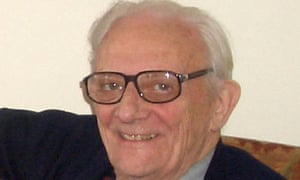Although I've always enjoyed his artwork, he is another of the Ladybird artists that I've grown into more as I've got older. One reason is perhaps because his books are among the first Ladybirds I ever encountered - even before I started school. I think we had a copy of The Fireman and The Policeman around the house - probably given to my older brother.
So those memorable illustrations of the Dixon-of-Dock-Green-esque bobby and the splendid crimson of the fire engines are such a fundamental a part of my early childhood that I never really gave them much of a thought.
The next John Berry books I met were probably those he illustrated for the first version of the Peter and Jane series. Although the differences between the Ladybird artists who contributed to this series are glaringly obvious to me now, at the time I was unaware of the different hands at work. Now I'll get this bit out of the way early (because it pains me to say it) but Berry wasn't at his best painting children at play.
This is a bit of a basic problem when illustrating a children's reading scheme and is probably the reason why he only produced the artwork for 3 of the 36 books in the series. Although for me now the charm of his illustrations for this series is in their very stiffness and formality, it probably didn't quite meet the exacting requirments of Editorial Director Douglas Keen, who preferred Wingfield and Aitchison's ability to blend realism with movement and imagination.
I'm speculating here, of course - but anyway there was no lack of Ladybird illustration work for Berry at this time. Much more up his street was the People at Work series that he alone illustrated, between 1961 and 1972.
In terms of social history this series may be unique in its documentation of the world of work in the second half of the 20th century, and contemporary attitudes towards it. Not only have some key professions been captured in the stunning photorealism of Berry's artwork but so much can be inferred by the emphasis of the books, what was selected, what was omited and what was updated.
For me, in terms of tone and outlook, the series breaks into two parts: the books produced before 1965 and those produced between 1965 and the end of the series in 1972 and I aim to look at these separately.
For now though, let me me sum up why I now find John Berry's artwork breathtaking. Yes, his technical ability was extraordinary. Yes, he could paint factories, machinery and architecture with photographic precision but that alone wouldn't make an artist great. Now I'm no art critic or art historian and, if you know about this stuff, you're going to have to be tolerant of me when I mangle concepts and use the wrong terms. But for me Berry could compose and interpret a scene with small choices and small touches that set the final piece on a different plane, while making the process seem effortless. In addition to this, there's his versatility that I find baffling.
In my next post I'll look in more detail at the first books in this series: The Policeman, Nurse, Fireman, Builder, Farmer and Fisherman. after that I'll look at the later 'Work' books and other series he illustrated for Ladybird.
But in the meantime, here's a brief biography in the form of Cressida Connoly's excellent piece written shortly after Berry died in 2009











